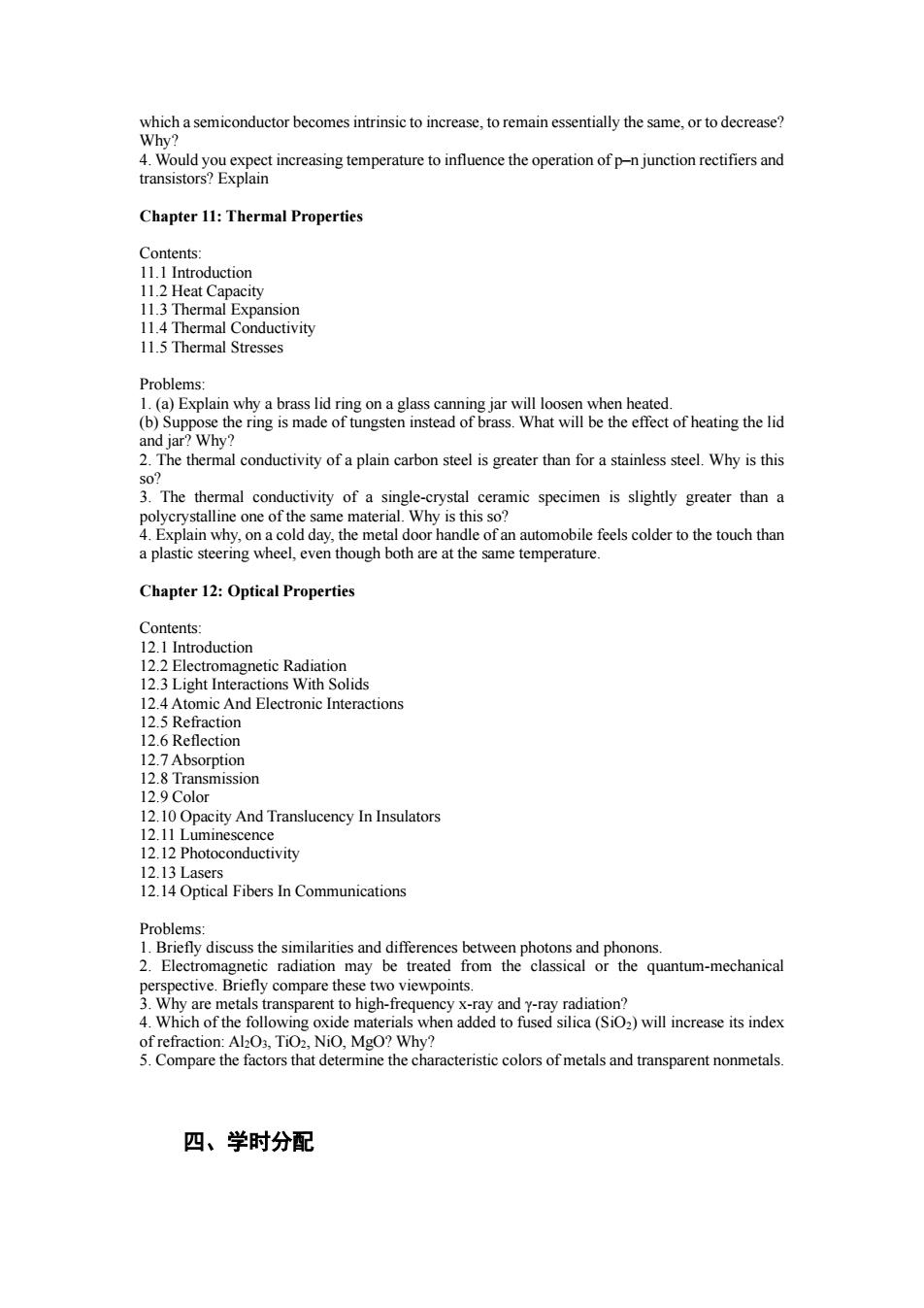正在加载图片...

whichasemouctor becomes ininictoinrease toremain essentially the samertoerease? increasing temperature to influence the operation of pnjunction rectifiers and Chapter 11:Thermal Properties Contents duction 12 Heat Cap 11.3 Thermal Exp Proble (a) lain a glas (b)Supp Wh al conductivity of a plain carbon steel is greater than for a stainless steel.Why is this The the ermal cond feels cole to the touch than a plastic steering wheel,even though both are at the same temperature. Chapter 12:Optical Properties Conter And Elns Wit olid 12.5 Refraction Problems diemuee the ei milarities and differ 2.Electromagnetic radiation may be treated from the classical or the quantum-mechanical o viewpoints 4.Which of the follow N.Mgo?Why? Compare th e the of metals and transparent nonmetal 四、学时分配which a semiconductor becomes intrinsic to increase, to remain essentially the same, or to decrease? Why? 4. Would you expect increasing temperature to influence the operation of p–n junction rectifiers and transistors? Explain Chapter 11: Thermal Properties Contents: 11.1 Introduction 11.2 Heat Capacity 11.3 Thermal Expansion 11.4 Thermal Conductivity 11.5 Thermal Stresses Problems: 1. (a) Explain why a brass lid ring on a glass canning jar will loosen when heated. (b) Suppose the ring is made of tungsten instead of brass. What will be the effect of heating the lid and jar? Why? 2. The thermal conductivity of a plain carbon steel is greater than for a stainless steel. Why is this so? 3. The thermal conductivity of a single-crystal ceramic specimen is slightly greater than a polycrystalline one of the same material. Why is this so? 4. Explain why, on a cold day, the metal door handle of an automobile feels colder to the touch than a plastic steering wheel, even though both are at the same temperature. Chapter 12: Optical Properties Contents: 12.1 Introduction 12.2 Electromagnetic Radiation 12.3 Light Interactions With Solids 12.4 Atomic And Electronic Interactions 12.5 Refraction 12.6 Reflection 12.7 Absorption 12.8 Transmission 12.9 Color 12.10 Opacity And Translucency In Insulators 12.11 Luminescence 12.12 Photoconductivity 12.13 Lasers 12.14 Optical Fibers In Communications Problems: 1. Briefly discuss the similarities and differences between photons and phonons. 2. Electromagnetic radiation may be treated from the classical or the quantum-mechanical perspective. Briefly compare these two viewpoints. 3. Why are metals transparent to high-frequency x-ray and γ-ray radiation? 4. Which of the following oxide materials when added to fused silica (SiO2) will increase its index of refraction: Al2O3, TiO2, NiO, MgO? Why? 5. Compare the factors that determine the characteristic colors of metals and transparent nonmetals. 四、学时分配